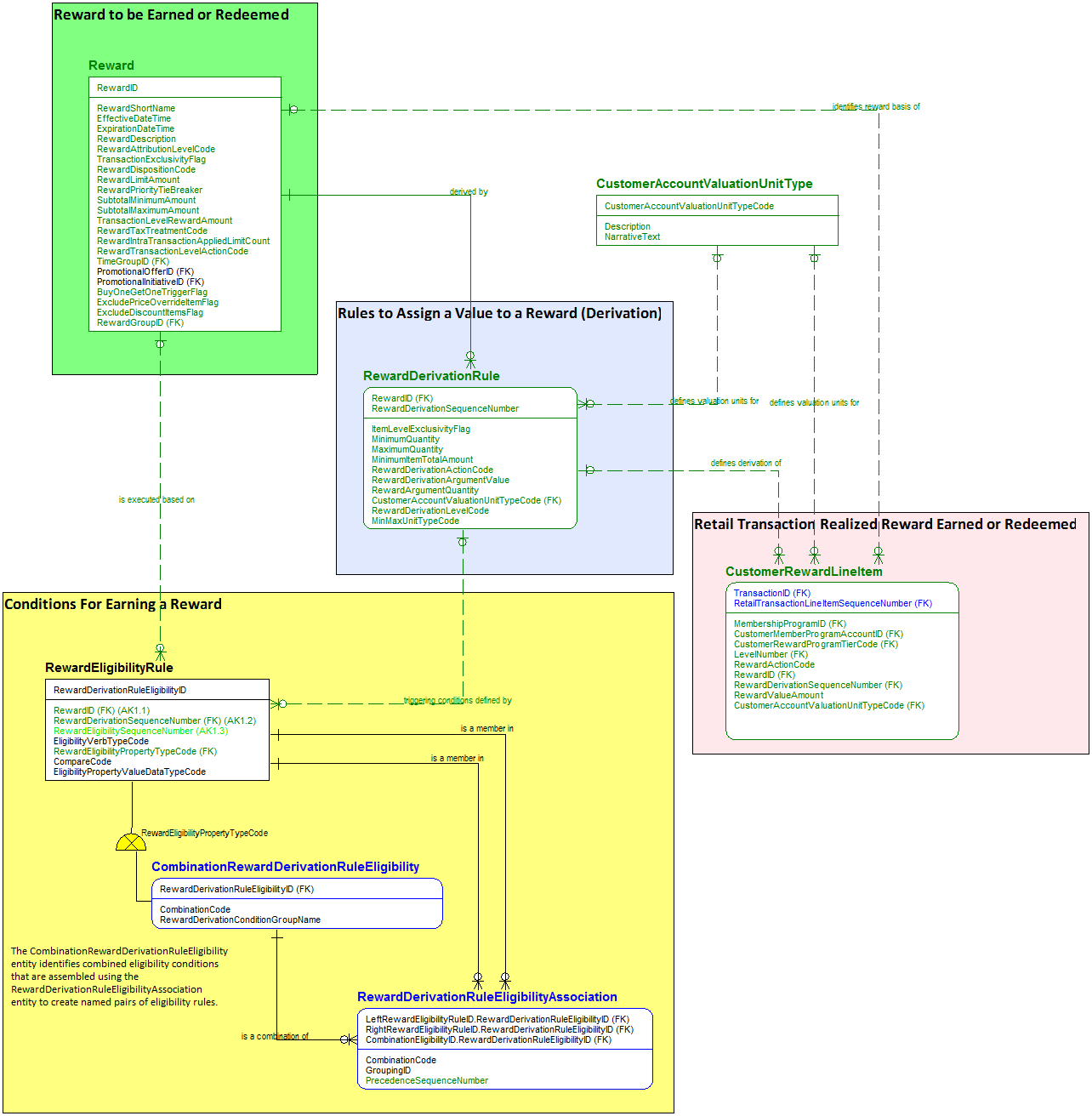Customer Rewards Use Case Overview
This subsection of Customer Membership Program and Rewards presents worked examples of different reward scenarios and how they may be represented in the ARTS ODM. The use cases here are intended to explain how the ARTS entities, relationships and attributes store information. They are not intended to be part of a standard. The worked examples consist of entity and attribute templates with filled in data which illustrate how ARTS represents the reward rules described in the use case narrative. This will help readers understand the underlying structure, relationship and enumerated values that make up the ARTS Rewards collection.
The specifications of the conditions that determine reward eligibility, reward derivation, reward disposition and reward financial disposition may be very complex for promotion-driven retailers. The reward use cases developed in this section provide a reasonable selection of basic reward design patterns. They do not cover every conceivable reward design. Also, the ARTS ODM entities, relationships and attributes may need to be extended to support retailer unique reward propositions.
This collection of use cases is aimed at using scenarios to show how reward entities, relationships and attributes support eligibility, derivation, disposition and accounting disposition. The Understanding Rewards section explains the overall information design strategy used to represent rewards and should be read carefully before reviewing the use cases.
Reward Scenario Assumptions Related to Events
Reward rule execution is triggered by different events. Events in turn occur within different customer order entry, retail transaction, customer visits, advertising responses and other encounters between consumers/customers and the retailer. The ARTS ODM in its current form represents events and encounters implicitly within its retail transaction and customer order subject areas. There is limited support for non-transactional encounters such as customer referrals and visits but it is an aspect of the ODM that requires further development. The scenarios discussed here involve retail transaction-based events and triggers. This is adequate for covering reward rules. Future versions of the ARTS ODM, particularly as it evolves to support unified commerce, will extend the range of reward trigger events and related context to include a broader range of consumer/customer -retailer interactions.
ARTS ODM Entity View for Customer Reward Rules Use Cases
The entity diagram here shows the primary ARTS ODM entities and attributes used in the scenarios discussed in this section. The colored block around the entities are coordinated with the colors used to highlight entity attributes in the filled in entity types. Where relevant, some supplementary entity types may be shown in the filled in entities to fully represent a scenario.
Figure 45 - Entity Diagram for Customer Rewards Use Cases

Customer Reward Rules Scenarios
The ARTS ODM V7.3 includes seven different use case examples to illustrate how reward rules may be represented. Future versions of the ODM may expand this list.. Each use case is intended to stand alone. Here are the use case links:
•Use Case 1 ARTS Club Elite Member October Bonanza
•Use Case 2 ARTS Club Hardware Handyman Promotion
•Use Case 3 ARTSWEAR Sports Attire Super Special
•Use Case 4 Buy One Get One (BOGO Example)
•Use Case 5 Multi-customer Membership Tier Discretionary Promotion
•Use Case 6 In-store Promotion - Combined Eligibility Criteria
•Use Case 7 Brand Funded Instant Rebate